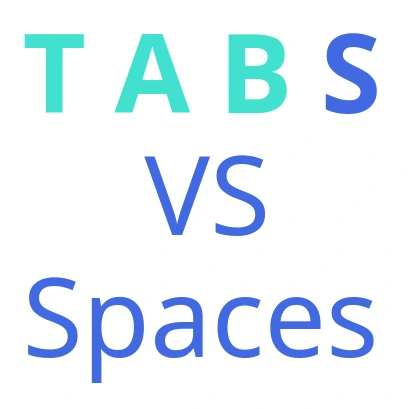In the world of coding, there’s an ongoing debate about Tabs vs Spaces which is seemingly small but surprisingly important: should we use tabs or spaces to indent our code? Let’s break it down in simple terms and look at some examples.
The Tab Team
Tabs are like flexible placeholders. They let developers choose how wide the indentation should be based on personal preferences. Here’s a simple Python code snippet using tabs:
def calculate_square_area(side_length):
# Calculate the area of a square
return side_length ** 2
Tabs make it easy for developers with different styles to work together on projects without causing formatting issues. Flexibility is the key point for the tab supporters.
Advantages of Tabs
- Smaller file sizes: Each tab character is just one byte
- Customizable display width: Developers can set their preferred indentation width
- Semantic meaning: Tabs represent a single level of indentation
- Accessibility: Better for developers who need larger indentation for visibility
The Space Side
Now, the space supporters argue for a more consistent and visually neat approach. Spaces make sure the code looks the same no matter the settings in someone’s editor. Check out the same Python code snippet using spaces:
def calculate_square_area(side_length):
# Calculate the area of a square
return side_length ** 2
Spaces give a uniform look, which is handy for projects with strict style rules or when contributing to open-source projects with set conventions.
Advantages of Spaces
- Consistent display: Code looks identical across all editors
- Precise control: Fine-grained control over alignment
- Industry standard: Many major projects prefer spaces
- No mixed indentation issues: Spaces can’t be misinterpreted
The Compromise: Tabs for Structure, Spaces for Neatness
Some suggest a mix of both, using tabs for the main structure and spaces for fine-tuning alignment:
def calculate_square_area(side_length):
# Calculate the area of a square
return side_length ** 2
This approach combines the flexibility of tabs with the neatness of spaces, trying to please both sides.
Real-World Examples
Popular Style Guides
- Python (PEP 8): Recommends 4 spaces
- Google Style Guides: Generally prefer spaces
- JavaScript: Mixed community preferences, but spaces are common
- Ruby: 2 spaces is the convention
IDE and Editor Support
Most modern development environments handle both approaches well:
- VS Code: Configurable, can convert between tabs and spaces
- PyCharm: Smart indentation with either choice
- Sublime Text: Automatic detection and maintenance of existing style
The Impact on Development
Version Control
- def old_function():
- return "Hello"
+ def new_function():
+ return "Hello"
Mixed indentation can cause unnecessary diff changes in version control systems.
Team Dynamics
The choice between tabs and spaces can affect:
- Code review processes
- Contribution guidelines
- Onboarding new team members
- Automated formatting tools
Best Practices
- Choose and Stick: Whatever you choose, be consistent
- Document Preferences: Include indentation rules in your style guide
- Use EditorConfig: Set up
.editorconfigfiles to maintain consistency - Automated Formatting: Implement pre-commit hooks or CI/CD checks
Modern Solutions
Auto-formatters
- Black for Python
- Prettier for JavaScript
- RuboCop for Ruby
- gofmt for Go
These tools often make the tabs vs. spaces decision for you, promoting consistency across projects.
What Does It All Mean?
In the end, the tabs vs. spaces debate is about coding style and consistency. It’s like choosing between different flavors of ice cream – it depends on personal taste, team preferences, or the project’s needs.
Whether you go for tabs, spaces, or a mix of both, the important thing is to stick to your chosen style throughout your code. In the big world of coding challenges, the tabs vs. spaces discussion might seem small, but it shows how much developers care about making their code not just work but also look good and easy to understand.
Final Tips
- Check Project Standards: Follow existing conventions when contributing to projects
- Use Modern Tools: Let auto-formatters handle the details
- Focus on Readability: Choose the option that makes your code most readable
- Consider Team Preferences: In a team setting, group consensus matters more than personal preference
Remember, the goal is to write clean, maintainable code that others can easily understand and work with. The indentation debate, while important for consistency, shouldn’t overshadow the more critical aspects of software development like architecture, testing, and functionality.
